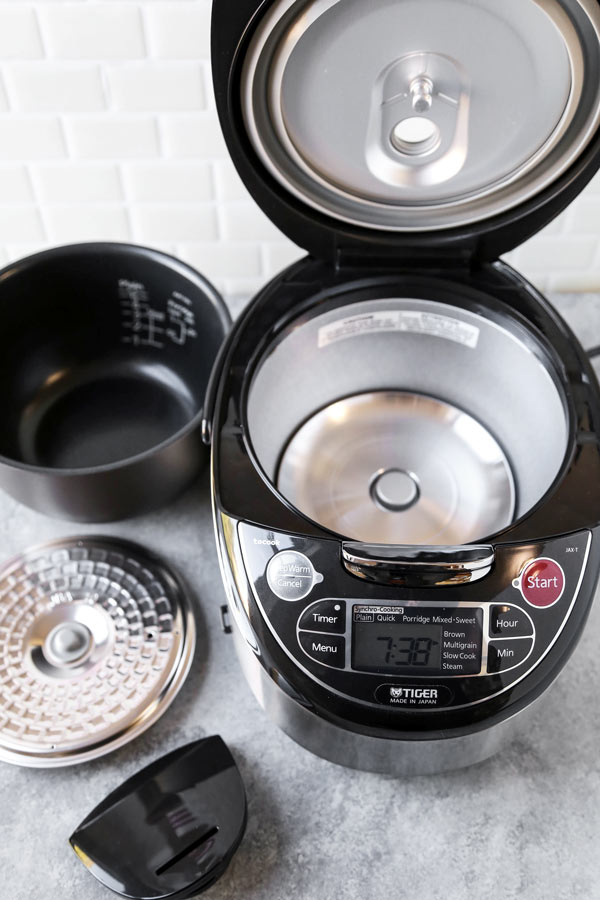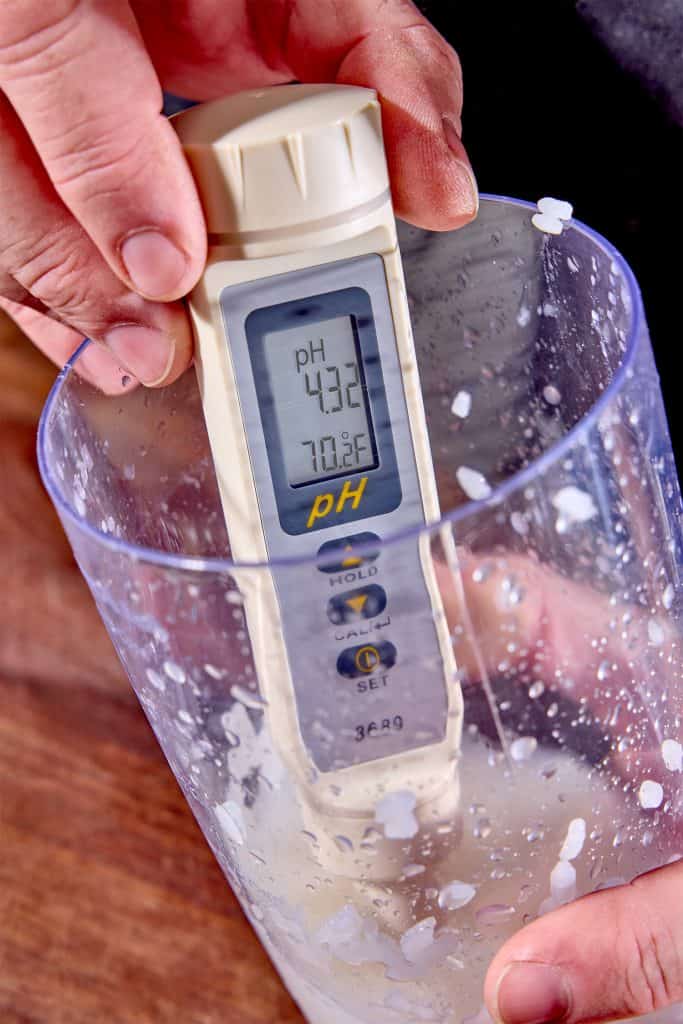Your Tiger rice cooker suddenly stops working mid-cycle, leaving you with half-cooked rice and a blinking display. Whether it’s refusing to turn on, cooking unevenly, or showing mysterious error codes, these issues can turn dinner prep into a frustrating ordeal. The good news? Most Tiger rice cooker problems have straightforward solutions you can handle at home without professional help.
This comprehensive guide walks through every common issue—from power failures to scorched rice—using only verified troubleshooting steps from Tiger’s official documentation. You’ll learn exactly what to check, when to call support, and how to prevent future problems with your appliance.
Power Cord and Electrical Connection Fixes

Immediate Power Failure Solutions
When your Tiger rice cooker sits completely dark with no response:
- Check both ends of the power cord—loose connections cause 80% of “dead” cookers
- Remove debris from the plug using a dry cloth or compressed air
- Straighten the cord—bent cords interrupt power flow during operation
- Test another outlet to rule out electrical supply issues
If these steps don’t restore power, the internal components likely need professional service. Never attempt to open the base unit yourself as this voids warranties and creates electrical hazards.
Fixing the Flashing 0:00 Display Issue
A blinking 0:00 display indicates your lithium battery has died after 4-5 years of service. This backup battery only maintains the clock when unplugged but never affects cooking performance. All functions work normally while connected to power.
Important: Contact Tiger customer service for battery replacement (fees apply). Until then, simply reset the clock each time you plug in the cooker—this won’t impact your cooking results.
Reset Your Tiger Rice Cooker Properly
Force Reset Method That Actually Works
When your cooker seems confused about which program to run:
- Plug into power and ensure the unit is on
- Press and hold [Cancel] for exactly 5 seconds
- Watch all lights disappear—this confirms the reset worked
- Select your desired program fresh
Critical note: Unplugging the power cord does NOT reset the cooking function. Your Tiger always remembers the last program used until you manually cancel it. This is why many users think their cooker is broken when it’s just stuck in the previous cycle.
When Resetting Doesn’t Solve the Problem
If your cooker still won’t reset properly after following these steps, check for:
– Loose rice grains on the heater plate creating false temperature readings
– Warped inner pan that doesn’t sit flush with the heating element
– Water residue around the gasket that may interfere with sensor operation
Fix Undercooked Rice in Your Tiger Cooker

Systematic Troubleshooting Approach
Undercooked rice stems from several preventable causes. Work through these checks in order:
First, reset the cooker using the Cancel button method—stuck programs often cause premature shutoff.
Check your settings:
– Verify you selected the correct menu (White Rice vs. Quick vs. Brown)
– Ensure you’re not accidentally using timer mode
Clean the heater plate:
– Remove every grain from the heating element
– Wipe with damp cloth, dry thoroughly
– Even tiny particles create hot spots that trick sensors
Position the inner pan correctly—it should sit flush without wobbling. A warped pan requires replacement.
Water Temperature Rules You Must Follow
Never use warm or hot water—temperatures above 95°F (35°C) confuse the temperature sensors, causing early shutoff. Always use cold water straight from the tap. Hot water doesn’t speed up cooking—it actually prevents your Tiger rice cooker from functioning properly.
Ingredient Guidelines for Perfect Results
When adding vegetables or proteins:
– Maximum 70g (2.5oz) per batch
– Chop ingredients finely to ensure even cooking
– Place on top of rice—never mix into the rice
– Scale appropriately: 2 cups rice = 140g ingredients max
Eliminate Scorched Rice Problems Completely
Root Cause Analysis
That burnt smell isn’t just unpleasant—it indicates Bacillus cereus bacteria multiplying from extended keep-warm periods. This bacteria thrives when rice stays between 40-140°F for too long.
Immediate action required:
1. Discard the rice—don’t risk food poisoning
2. Deep clean all components using sanitizing solution
3. Prevent future burning by adjusting your habits
Sanitizing Deep Clean Procedure
Create this powerful cleaning solution:
– 2 tablespoons chlorine bleach
– 2 tablespoons dish soap
– Hot or boiling water
Soak these parts for 2-3 hours:
– Inner pan
– Inner lid and gasket
– Steam vent cap
– Dew collector
– Spatula holder
Rinse thoroughly and dry completely before reassembly. This deep clean eliminates bacteria and restores proper sensor function.
Prevention Strategies That Work
- Limit keep-warm time to 12 hours maximum (10 hours in summer)
- Wash rice thoroughly to remove waxy bran oil
- Avoid timer settings longer than 12 hours
- Check for power outages—follow recovery procedures immediately
Fix Steam and Boil-Over Issues Permanently

Steam Vent Maintenance You Can’t Skip
A clogged steam vent creates pressure problems and messy boil-overs.
Clean after each use:
– Remove steam vent cap
– Wash with warm soapy water
– Clear any rice starch buildup
– Dry completely before reassembly
Pro tip: Keep a dedicated small brush for this purpose—it makes cleaning much faster and more effective.
Measurement Accuracy for Perfect Rice
Use only the supplied measuring cup—standard cups hold different volumes. Fill water to the inner pan scale marks based on your rice amount.
Critical step: Pre-wash rice until water runs clear. Excess starch causes foaming and boil-overs. This simple step solves most steam-related issues in your Tiger rice cooker.
Water Quality and pH Troubleshooting

Alkaline Water Problems You Might Not Know
Water with pH above 9:
– Breaks down rice starch creating sticky, wet rice
– Turns rice yellow during cooking
– Requires 40% less water than normal
Test your water—if rice consistently turns yellow or stays mushy, try filtered water. Many municipal water supplies have high alkalinity that affects rice cooking.
Safe Liquid Guidelines
Safe liquids:
– Cold broth (select “Mix rice” menu)
– Maximum 60% capacity when using broth
– Never use milk (shoots from vent)
– Avoid tomato sauce (too thick)
Protect Your Non-Stick Coating Long Term
Coating Damage Prevention
Your Tiger’s non-stick coating fails from:
Avoid these mistakes:
– Metal utensils or knives
– Extended keep-warm beyond 12 hours
– Cooking brown rice regularly (waxy oil penetrates coating)
– Adding salt, butter, or oil directly to dry rice
– Water dripping from gasket into pan
Use only the supplied spatula and soft sponges for cleaning. Flakes are non-toxic but indicate the coating is failing.
When to Replace the Inner Pan
Replace your inner pan immediately if:
– Coating flakes extensively
– Pan becomes warped or dented
– Food starts sticking despite proper oiling
When to Contact Tiger Support
Contact customer service for:
– Battery replacement needs
– Warped inner pan replacement
– Electrical issues beyond basic troubleshooting
– Internal component failures
– Warranty-related repairs
Final tip: Your Tiger rice cooker typically provides 8-10 years of reliable service with proper care. Most “broken” cookers simply need thorough cleaning and correct usage adjustments. When troubleshooting how to fix your Tiger rice cooker, start with the basics—clean the heater plate, check your measurements, and reset the cooking function. These three steps solve 90% of performance issues without professional help. Always refer to your specific model’s manual for minimum cooking amounts and special features, as requirements vary between 5.5 cup and 10 cup models. With these proven fixes, you’ll keep your Tiger rice cooker performing like new for years to come.



